Knowledge Bases
Knowledge bases are a fundamental component of artificial intelligence and have several advantages that make them valuable for various application. The technology offers a powerful framework for representing and reasoning with structured data, providing several advantages that are particularly beneficial for modern data-driven applications, especially for managing and leveraging complex, interconnected data.

Knowledae- Base of Aristolochic-Acid-I (KBAAl)
Aristolochic acid I (AAI) is a potent nephrotoxin and carcinogen found in certain plants of the Aristolochia genus, commonly known as aristolochia or birthwort. When ingested, aristolochic acid I can cause severe damage to the liver and kidneys. The mechanisms underlying the toxicity of aristolochic acid involve its ability to form DNA adducts, leading to mutations and genomic instability, particularly in renal tubular cells and hepatocytes.
Here we constructed the early version of a knowledge base of AAI (KBAAI) based on current more than 1,500 peer-reviewed publication in PubMed database. The current version covers 3472 scientific entities and 10511 relations, which could help the researchers grasp the essence from the high-quality corpus.

Knowledae-Base of CHronic INflammation to LIver CAncer (kbCHIN2LICA)
Chronic inflammation is a known risk factor for the development of liver cancer, specifically hepatocellular carcinoma (HCC). The progression from chronic inflammation to liver cancer is a complex process involving multiple cellular and molecular mechanisms. Inflammatory Microenvironment, Molecular Network Disruption, Gut Microbiome Dysbiosis, Role of Non-parenchymal Cells, Epithelial-Mesenchymal Transition (EMT), Metabolic Reprogramming, Oxidative Stress and Lipid Metabolism, and Suppression of Immune Surveillance could be the promising targets. To understand these mechanisms, we develop the Knowledge Base of Chronic Inflammation to Liver Cancer (kbCHIN2LICA) based on 2710 genes, 1868 chemicals retrieved from 6161 publications as of March 18th 2024.
Projects
1. 某部XX专项(没有过于先进,但也不便展示),关键词:生物安全、多模态人工智能,2021-2024,在研,主持(课题)
2. 浙江省自然科学基金,LY20H030006,《GSNO调节糖尿病小鼠“肠道微生态—肝脏损伤”轴机制研究》,2020-2022,10万,结题,主持
3. 国家重点研发计划,2019YFC0840609,《病毒性肝炎诊治云平台与智能诊断技术研究》,2020-2022,30万,结题,主持(任务)
4. 国家重点研发计划,2017YFC1200205,《微生物组多组学生物信息学新算法研究与平台构建》,2017-2020,78万,结题,主持(任务)
5. 国家自然科学基金青年项目,81401707,《联合细胞因子风暴、基因分型和临床特征的“人感染H7N9禽流感”支持向量机预后模型》,2015-2017,23万,结题,主持
Committee & Awards
期刊兼职
2024-至今 《Infectious Microbes & Diseases》,编委
2020-至今 《Frontiers for Young Minds》,副主编
学会兼职
2020-至今 中国毒理学会,“表观遗传毒理学”专业委员会,委员
2019-至今 浙江省生物信息学会,“临床大数据”专业委员会,委员
2017-至今 浙江省毒理学会,“药物毒理学”专业委员会,委员
2017-至今 浙江省大分子测试协会,“生物大分子专业”委员会,委员
学术获奖
2019 浙江省毒理学会,“毒理学科技奖”(个人奖)
2018 Young Investigator Award( APASL 2018 )
Teaching
-
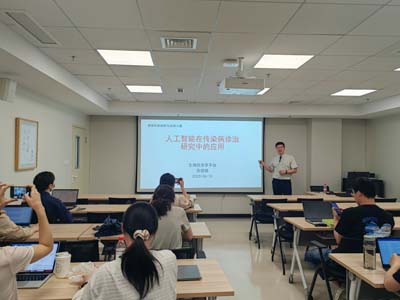
2016年-至今:浙江大学研究生课程《感染病学专题:人工智能与感染病》 -
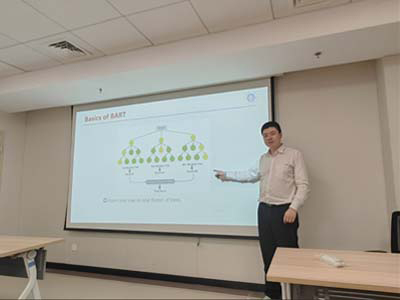
2024年3月1-26日:浙江大学金课孵育项目医学生科研能力提升专项《高通量靶点:如何从关联到因果?》 -
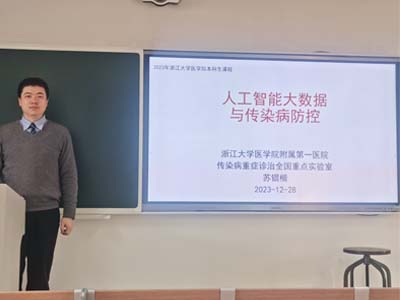
2023年12月21-28日:浙江大学本科生课程《重要传染病的防治基础(72120570)》中的《人工智能大数据与传染病防控》 -

2020年,《感染病学进展》课程入选“浙江大学医学院首批金课” -
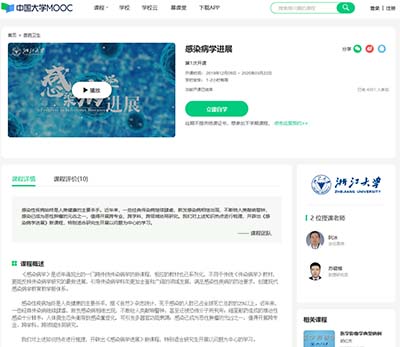
2019-2020年:中国大学MOOC慕课《感染病学进展》中的《人工智能技术在感染病学中的应用》累计授课4801人次
People
Supervisors

SU, Kun-Kai
State Key Laboratory for Diagnosis and Treatment of Infectious Diseases, Zhejiang University

LI, Lan-Juan
State Key Laboratory for Diagnosis and Treatment of Infectious Diseases, Zhejiang University

Bréchot, Christian
Pasteur Institute, Paris, France
Collaborators & Technicians

CAO, Qing-Yi

MENG, Xiao-Hua

NI, Shu-Jun
Graduate students
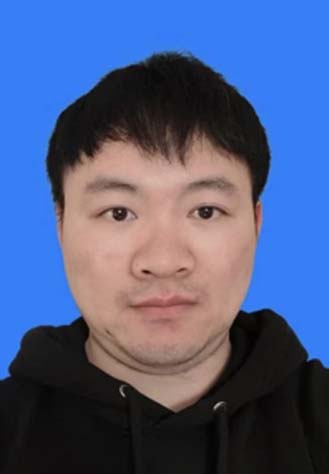
YANG, Long
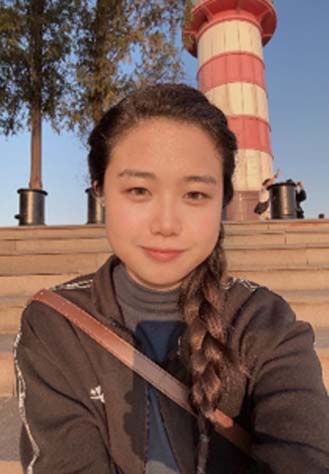
LI, Tong-Tong

HU, Zi-Hao
Visiting Undergraduates

NISHABOORI, Sara

KONG, Ke-Xuan

WANG, Jia-Yao

LIU, Cheng-Peng

CHEN, Xin-Yue

ZHAO, Cheng-Xing
Publications
1. Hu Z-H, Wang Y, Yang L, Cao Q-Y, Ling M, Meng X-H, Chen Y, Ni S-J, Chen Z, Liu C-Z, Su K-K*. 2023. Evaluation of ten different pipelines for bacterial single-nucleotide variant detection. Infect Microbes Dis.
2. Zhu D, Ouyang X, Zhang Y, Yu X, Su K*, Li L*. 2023. A promising new cancer marker: long noncoding RNA EGFR-AS1. Front Oncol 13:1130472.
3. Zhu D-H, Zhang Y-H, Ou-Yang X-X, Meng X-H, Cao Q-Y, Yu X-P, Lu J, Li L-J, Su K-K*. 2022. Expression, prognostic value, and functional mechanism of polarity-related genes in hepatocellular carcinoma. Int J Mol Sci 23:12784.
4. Wang C, Su K, Lin H, Cen B, Zheng S, Xu X. 2022. Identification and verification of a novel MAGI2-AS3/miRNA-374-5p/FOXO1 network associated with HBV-related HCC. Cells 11:3466.
5. Su K, Zheng X, Bréchot C, Zheng X, Zhu D, Huang R, Zhang Y, Tao J, Lou Y, Li L. 2022. Five-lipoxygenase-activating protein-mediated CYLD attenuation is a candidate driver in hepatic malignant lesion. Front Oncol 12:912881.
6. Di Wang, Kunkai Su, Zhongxiang Ding, Zhiqun Zhang, Chunlin Wang. Association of Vitamin D Receptor Gene Polymorphisms with Metabolic Syndrome in Chinese Children. Int J Gen Med. 2021 Jan 12;14:57-66.
7. Kunkai Su#, Xin Huang#, Kaijin Xu, Weibo Du, Danhua Zhu, Meifang Yang, Wenji Yuan, Lanjuan Li*, Transcriptomics Curation of SARS-CoV-2 Related Host Genes in Mice with COVID-19 Comorbidity: A Pilot Study, Infectious Microbes & Diseases, 2020.
8. Liu W, Su K. A Review on the Receptor-ligand Molecular Interactions in the Nicotinic Receptor Signaling Systems. Pak J Biol Sci. 2018;21(2):51-66.
9. Yao Y, Xu Y, Zhao J, Ma Y, Su K, Yuan W, Ma JZ, Payne TJ, Li MD. Detection of Significant Association Between Variants in Cannabinoid Receptor 1 Gene (CNR1) and Personality in African-American Population. Front Genet. 2018 Jun 14;9:199.
10. Liu Q, Han H, Wang M, Yao Y, Wen L, Jiang K, Ma Y, Fan R, Chen J, Su K, Yang Z, Cui W, Yuan W, Jiang X, Li J, Payne TJ, Wang J, Li MD. Association and cis-mQTL analysis of variants in CHRNA3-A5, CHRNA7, CHRNB2, and CHRNB4 in relation to nicotine dependence in a Chinese Han population. Transl Psychiatry. 2018 Apr 18;8(1):83.
11. Ma Y, Wen L, Cui W, Yuan W, Yang Z, Jiang K, Jiang X, Huo M, Sun Z, Han H, Su K, Yang S, Payne TJ, Wang J, Li MD. Prevalence of Cigarette Smoking and Nicotine Dependence in Men and Women Residing in Two Provinces in China. Front Psychiatry.2017 Dec 1;8:254.
12. Jiang K, Yang Z, Cui W, Su K, Ma JZ, Payne TJ, Li MD. An exome-wide association study identifies new susceptibility loci for age of smoking initiation in African- and European-American populations. Nicotine Tob Res. 2017 Dec 5.
13. Yao J, Wu L, Meng X, Yang H, Ni S, Wang Q, Zhou J, Zhang Q, Su K, Shao L, Cao Q, Li M, Wu F, Li L. Profiling, clinicopathological correlation and functional validation of specific long non-coding RNAs for hepatocellular carcinoma. Mol Cancer. 2017 Oct 23;16(1):164.
14. Wen L, Han H, Liu Q, Su K, Yang Z, Cui W, Yuan W, Ma Y, Fan R, Chen J, Jiang K, Jiang X, Payne TJ, Wang J, Li MD. Significant association of the CHRNB3-CHRNA6 gene cluster with nicotine dependence in the Chinese Han population. Sci Rep.2017 Aug 29;7(1):9745.
15. Jiang X, Su K, Tao J, Fan R, Xu Y, Han H, Li L, Li MD. Association of STAT4 polymorphisms with hepatitis B virus infection and clearance in Chinese Han population. Amino Acids. 2016 Nov;48(11):2589-2598.
16. Li T, Jin K, Zhu DY, Li L, Mao ZR, Wu BW, Wang YF, Pan ZF, Li LJ, Xiang CS, Su KK (*), Lou YJ. Premalignant alteration assessment in liver-like tissue derived from embryonic stem cells by aristolochic acid I exposure. Oncotarget. 2016 Nov 29;7(48):78872-78882.
17. Jiang X, Su K, Tao J, Fan R, Xu Y, Han H, Li L, Li MD. Association of STAT4 polymorphisms with hepatitis B virus infection and clearance in Chinese Han population. Amino Acids. 2016 Nov;48(11):2589-2598.
18. Su K, Wang Q, Qi L, Hua D, Tao J, Mangan CJ, Lou Y, Li L. MicroRNA-674-5p/5-LO axis involved in autoimmune reaction of Concanavalin A-induced acute mouse liver injury. Toxicol Lett. 2016 Sep 6;258:101-107.
19. Jin K, Su KK (#), Li T, Zhu XQ, Wang Q, Ge RS, Pan ZF, Wu BW, Ge LJ, Zhang YH, Wang YF, Shen GF, Zhu DY, Xiang CS, Li LJ, Lou YJ. Hepatic Premalignant Alterations Triggered by Human Nephrotoxin Aristolochic Acid I in Canines. Cancer Prev Res. 2016 Apr; 9(4):324-34.
20. Wang M, Ma Y, Yuan W, Su K, Li MD. Meta-Analysis of the COMT V158M Polymorphism in Major Depressive Disorder: Effect of Ethnicity. J Neuroimmune Pharmacol. 2016 Jan 23.
21. Ma Y, Wang M, Yuan W, Su K, Li MD. The significant association of Taq1A genotypes in DRD2/ANKK1 with smoking cessation in a large-scale meta-analysis of Caucasian populations. Transl Psychiatry. 2015 Dec 1;5: e686.
22. Tao J, Su K, Yu C, Liu X, Wu W, Xu W, Jiang B, Luo R, Yao J, Zhou J, Zhan Y, Ye C, Yuan W, Jiang X, Cui W, Li MD, Li L. Fine mapping analysis of HLA-DP/DQ gene clusters on chromosome 6 reveals multiple susceptibility loci for HBV infection. Amino Acids. 2015 Dec; 47(12):2623-34.
23. Guo J, Huang F, Liu J, Chen Y, Wang W, Cao B, Zou Z, Liu S, Pan J, Bao C, Zeng M, Xiao H, Gao H, Yang S, Zhao Y, Liu Q, Zhou H, Zhu J, Liu X, Liang W, Yang Y, Zheng S, Yang J, Diao H, Su K, Shao L, Cao H, Wu Y, Zhao M, Tan S, Li H, Xu X, Wang C, Zhang J, Wang L, Wang J, Xu J, Li D, Zhong N, Cao X, Gao GF, Li L, Jiang C*. The Serum Profile of Hypercytokinemia Factors Identified in H7N9-Infected Patients can Predict Fatal Outcomes. Sci Rep. 2015 Jun 1; 5: 10942.
24. Liu X, Zhang Y, Xu X, Du W, Su K, Zhu C, Chen Y, Lei S, Zheng S, Jiang J, Yang S, Guo J, Shao L, Yang Q, Chen J, Li L*. Evaluation of plasma exchange and continuous veno-venous hemofiltration for the treatment of severe avian influenza A (H7N9): a cohort study. Ther Apher Dial. 2015 Apr; 19(2):178-84
25. Gao HN, Yao HP, Liang WF, Wu XX, Wu HB, Wu NP, Yang SG, Zhang Q, Su KK, Guo J, Zheng SF, Zhu YX, Chen HL, Yuen KY, Li LJ. Viral genome and antiviral drug sensitivity analysis of two patients from a family cluster caused by the influenza A(H7N9) virus in Zhejiang, China, 2013. Int J Infect Dis. 2014 Dec;29:254-8.
26. Huang X, Su K, Zhou L, Shen G, Dong Q, Lou Y*, Zheng S. Hypoxia preconditioning of mesenchymal stromal cells enhances PC3 cell lymphatic metastasis accompanied by VEGFR-3/CCR7 activation. J Cell Biochem. 2013 Dec; 114(12):2834-41.
27. Zhu Z, Tong X, Zhu Z, Liang M, Cui W, Su K, Zhu J*, Li M*. Development of GMDR-GPU for gene-gene interaction analysis and its application to WTCCC GWAS data for type 2 diabetes. PLoS ONE. 2013; 8(4):e61943
28. Qin N, Ding W, Yao J, Su K, Wu L, Li L*. Genome sequence of Staphylococcus capitis QN1, which causes infective endocarditis. J Bacteriol. 2012. 194(16):4469-70.
29. Kim S, Kim YC, Qi H, Su K, Morrison SL, Chow SA*. Efficient identification of human immunodeficiency virus type 1 mutants resistant to a protease inhibitor by using a random mutant library. Antimicrob Agents Chemother. 2011. 55(11):5090-8.
30. Su K, Wang D, Ye J, Kim YC, Chow SA*. Site-specific integration of retroviral DNA in human cells using fusion proteins consisting of human immunodeficiency virus type 1 integrase and the designed polydactyl zinc-finger protein E2C. Methods. 2009. 47(4):269-76.